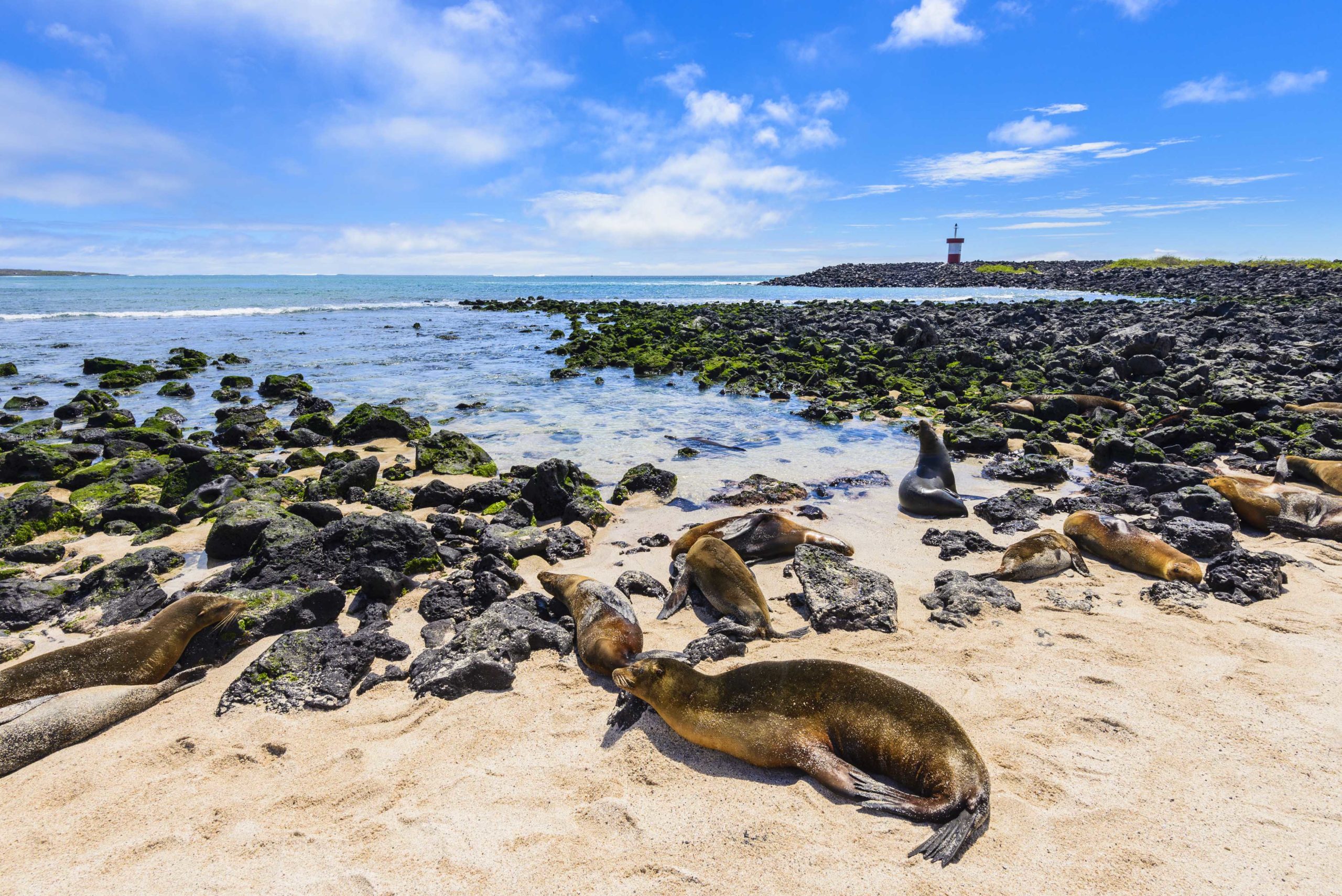- Capital: Quito capital of Eucador. Puerto Baquerizo Moreno capital of Galápagos Islands of
- Time Zone: GMT -6
- Currency: American dollar (USD)
Officially the Republic of Ecuador (Spanish: República del Ecuador) is a representative democratic republic in South America, bordered by Colombia on the north, by Peru on the east and south, and by the Pacific Ocean on the west. The country also includes the Galápagos Islands (Archipiélago de Colón) in the Pacific, about 965 kilometers (600 miles) west of the mainland. Ecuador straddles the equator, from which it takes its name, and has an area of 256,370 square kilometers (98,985 mi²). Its capital city is Quito; its largest city is Guayaquil Much like the revolutionary scientific idea it’s become synonymous with, the Galápagos Islands may inspire you to think differently about the world. Nowhere else can you engage in a staring contest with wild animals and lose. You can’t help thinking you’ve stumbled upon an alternate universe, some strange utopian colony organized by sea lions – the golden retrievers of the Galápagos – and arranged on principles of mutual cooperation. Don’t come expecting to see bizarre wildlife – there are no half-penguin, half-turtle ‘penurtles, ’ no large mammals with shark fins. What’s truly special is that the creatures that call the islands home act as if humans are nothing more than slightly annoying paparazzi. The islands have taken on a mythological status. Their relationship with Charles Darwin, the islands’ most famous visitor who undoubtedly violated several park rules in riding and eating the Galápagos turtles, has become distorted and romanticized. Yet you don’t have to be an evolutionary biologist or an ornithologist to appreciate one of the few places left on the planet where the footprint of the human presence is kept to a minimum
Cities
Guayaquil
Is a port city in Ecuador, known as an access point to the beaches of the Pacific and the Galapagos Islands. On the Simon Bolívar promenade, which runs along the Rio Guayas, stands the monument of La Rotonda. In the north, the district of Las Peña is full of colorful houses. Stairs lined with cafes and art galleries lead to the Santa Ana hill, which features a lighthouse and the chapel of Santa Ana, and offers views of the city
Quito
The capital of Ecuador, rises to an altitude of 2,850 m in the foothills of the Andes. Built on the foundations of an ancient Inca city, it is famous for its well-preserved colonial center with many 16th and 17th century churches and other structures that combine European, Moorish and indigenous styles. In particular, there is the cathedral on Plaza Grande and the Church of the Company, a richly decorated Jesuit religious building.
The Galapagos Islands
Are a volcanic archipelago of the Pacific Ocean. They are considered one of the world’s major wildlife viewing destinations. Province of Ecuador, the archipelago lies nearly 1,000 km off its coast. Its isolated territory is home to a variety of flora and fauna, many of which are unique. Charles Darwin went there in 1835, and his observations on the Galapagos species.
Bartolome Island 
Small half-moon shaped island facing Sullivan Bay, east of Santiago. Volcanic Island uninhabited, it is best known for its rock formations that come in different colors such as red, orange, green and black volcanic, the best known being Pinnacle Rock. To get there, you will enjoy a panga ride, a small boat, which will take you to the various beaches with its mangroves, ideal for swimming and diving
Española Island (Hood Island)
In the southeast of the archipelago, Española Island is the furthest away, but it is the most interesting for bird watching: dovetail gulls, finches, lava herons, mocking birds, etc. Española Island is the only place in the world where Galápagos albatrosses breed.
Isabela Islands (Albemarle Island)
Isabela Islands, 130 km long and 82 km wide, is the largest island in the Galápagos with five volcanoes, some of which are partially active. Cerro Azul and Wolf are the two most imposing, rising to a height of about 1700 m. Arriving on the island, you will be admiring its beauty; trees with deep green leaves on black and torn rocks welcome us, the colorful village separated in two by its ocher road, very sparsely populated, its large white sand beach deploying swamp landscapes, cactuses and plants stunned by heat and drought and its volcanoes pointing to the sky…
Santa Cruz Island
Santa Cruz Island, in Spanish “Isla Santa Cruz”, also known by the English as “Indefatigable Island”. Santa Cruz is the most touristic island in the Galapagos and offers the most attractions. You will enjoy a stroll in the bustling harbor and watch the pelicans fishing. Do not miss Puerto Ayora and its Darwin International Station which is a famous center where scientist work on research and projects for conservation of the Galápagos terrestrial and marine ecosystems.
Language
National or official languages: Spanish, Cofan, Quichua. The number of languages listed for Ecuador is 24. Spanish official language for Galapagos Islands
Electricity
The electricity is 127 volts; therefore, an adapter and/or converter for Eucador will be required.The electricity is 220-240 volts; therefore, an adapter and/or converter will be required for Galapagos
Entry requirements
Kindly make sure to have the proper documents required to enter the countries you are
visiting. Please refer to www.travel.gc.ca for updated information. Regarding visas, you can refer to the link: www.travel.gc.ca/travelling/advisories.Failure to obtain these documents prior to travel can result in being denied entry or exit from the country.
Communication
International access code: 00 International dialing code: 593 Concerning national calls made in Ecuador and Galapagos Islands, it is not necessary to dial the 593 country code. If you are calling from Canada, please dial 011, then 593 and finally the local phone number in Ecuador and Galapagos Islands.







